This week at practice we’re going to be working on flanking maneuvers. Not just to review them, but to train and improve! Over the years we’ve had several different variations of flanking, but all have had the same purpose: break the enemy line. It’s bread and butter stuff for melees. We’re going to be exploring three types of flanking maneuver, specifically the Classic Flank, the Cavalry Flank, and a Peel Flank (we’re still workshopping that last one).
The Classic Flank
Concept:
On the end of the line, you have a flank. When the flanking maneuver is called, they step out and around the opposing flank, bending the enemy line back. The rest of the team adjusts the gaps, until a weak point is found in the bend of the enemy line, which can be attacked.
Execution Summary:
- Set a strong flanker at the end of the line.
- Stretch friendly line out and around enemy line, forcing a bend
- Friendly line shifts to cover any gaps.
- As the enemy line bends, find a weak spot to attack.
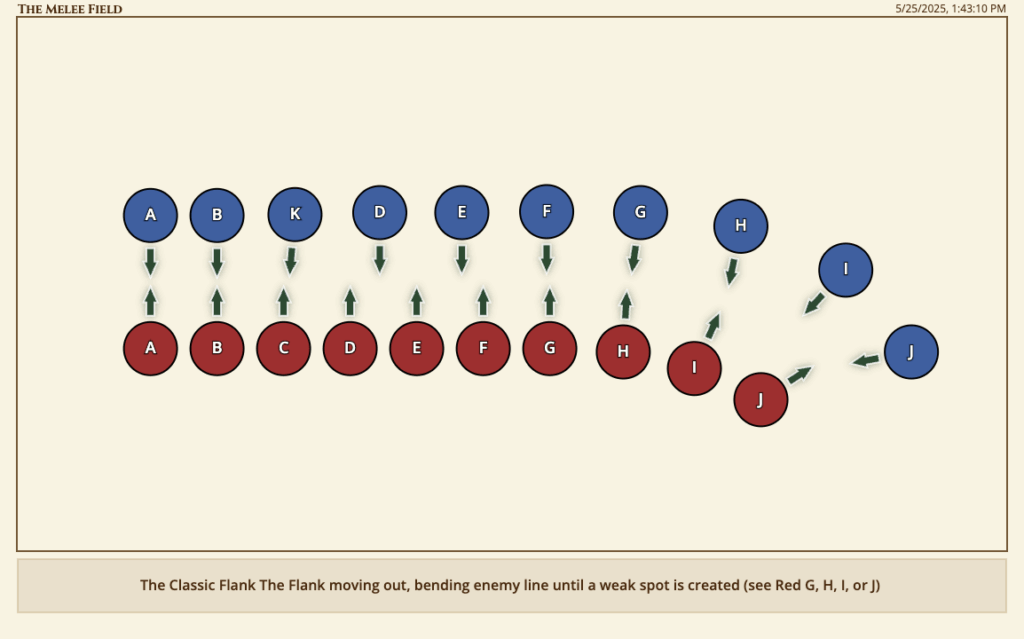
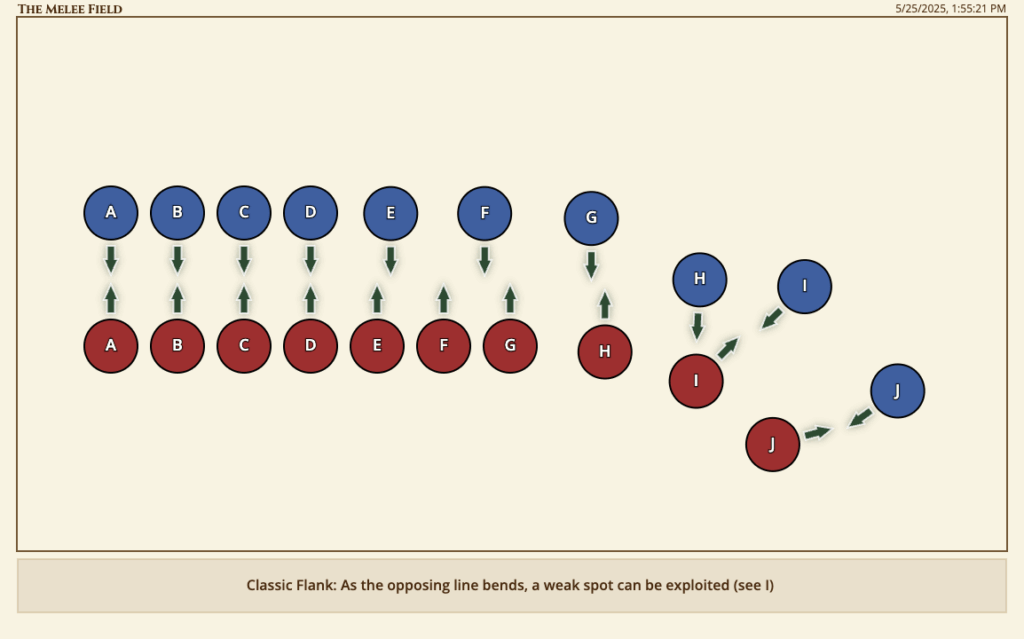

The Cavalry Flank
Concept:
A designated cavalry fighter (not on the edge) breaks from formation, rushes to the end of line, and strikes the enemy flank alongside their own flank in a fast, high-impact maneuver.
Execution Summary:
- Cavalry fighter is placed 2nd–5th in from the end.
- On command, cavalry fighter steps out and races to the flank.
- Cavalry and friendly flank hit the enemy flank together in a 2-on-1.
- If possible, cavalry fighter can continue on in a “Zip” along the enemy’s 180.
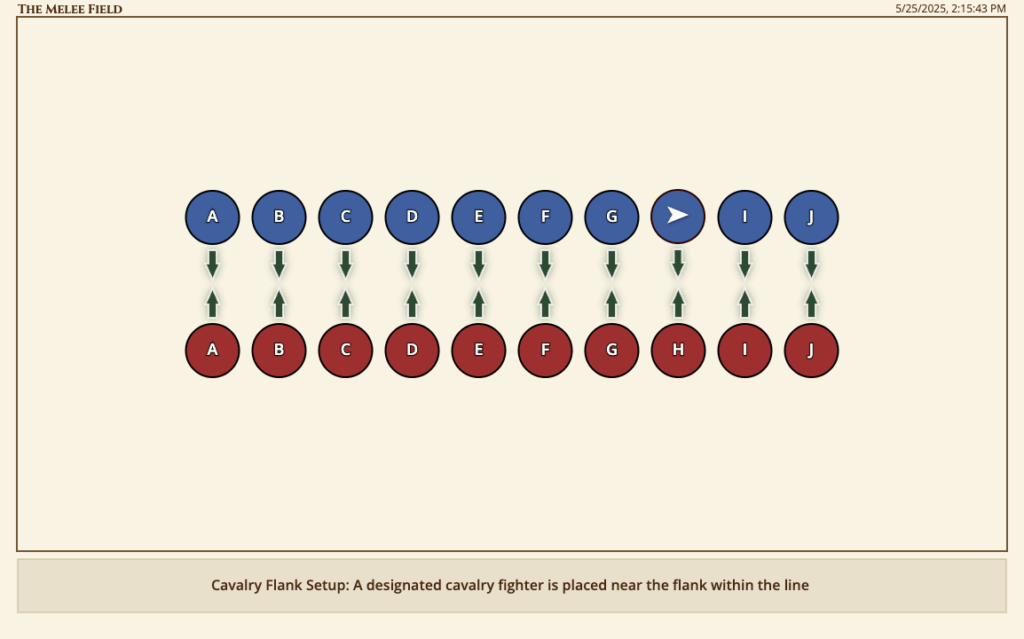
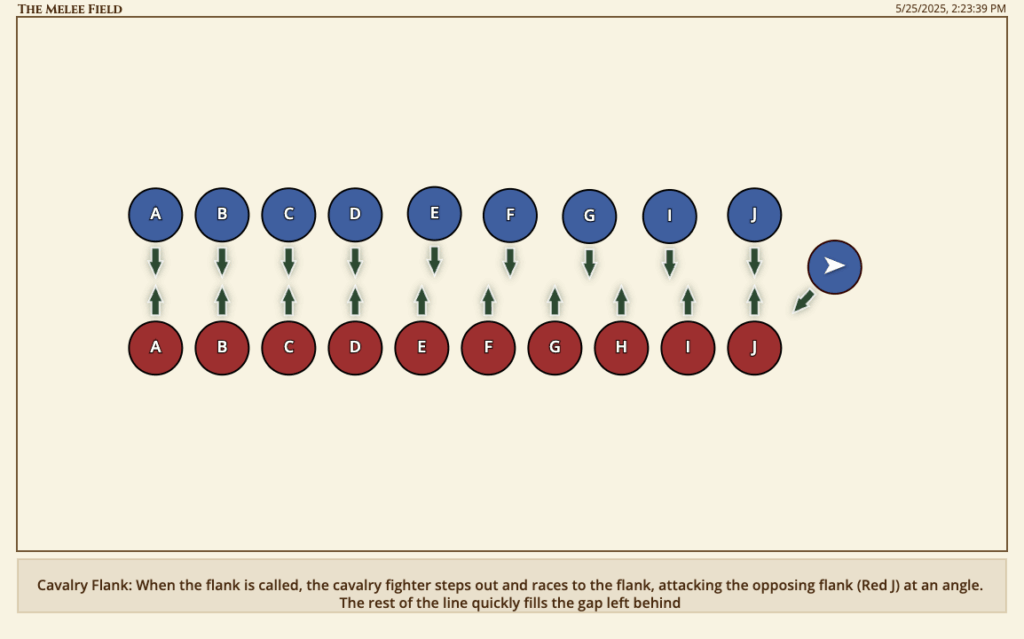
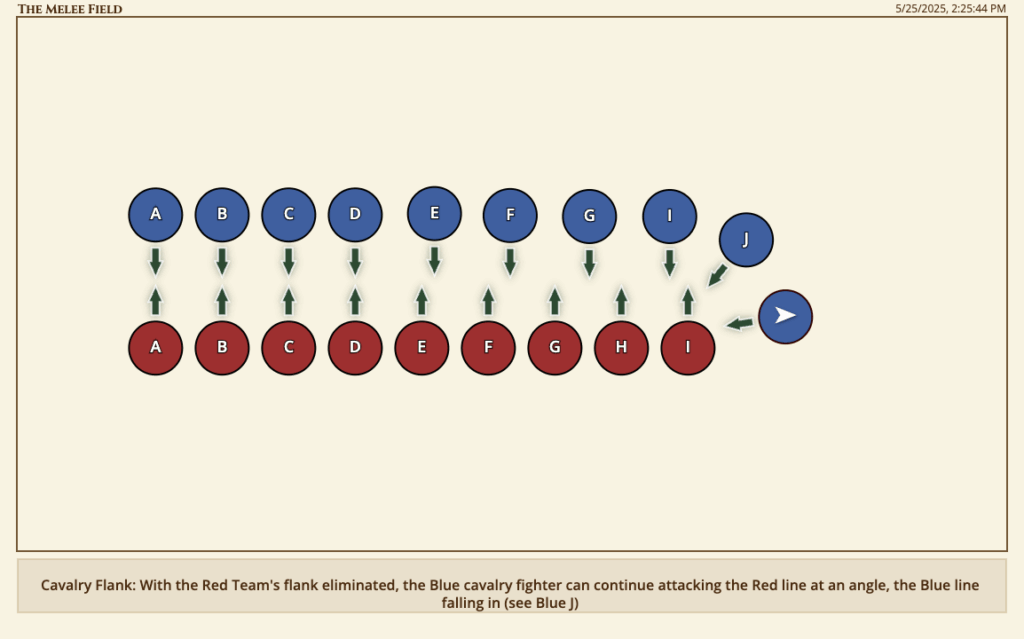
The Peel Flank
Concept:
The final two fighters attack the enemy flank directly. A third fighter (just inside them) steps outward but turns inward, shielding the flank attack by delaying or distracting the next enemy fighter down the line.
Execution Summary:
- Last 2 fighters rush the enemy flank (2-on-1).
- 3rd from end turns in and interferes with enemy’s second fighter.
- After the enemy flank is dead, the second fighter turns inwards and attacks next fighter in enemy line.

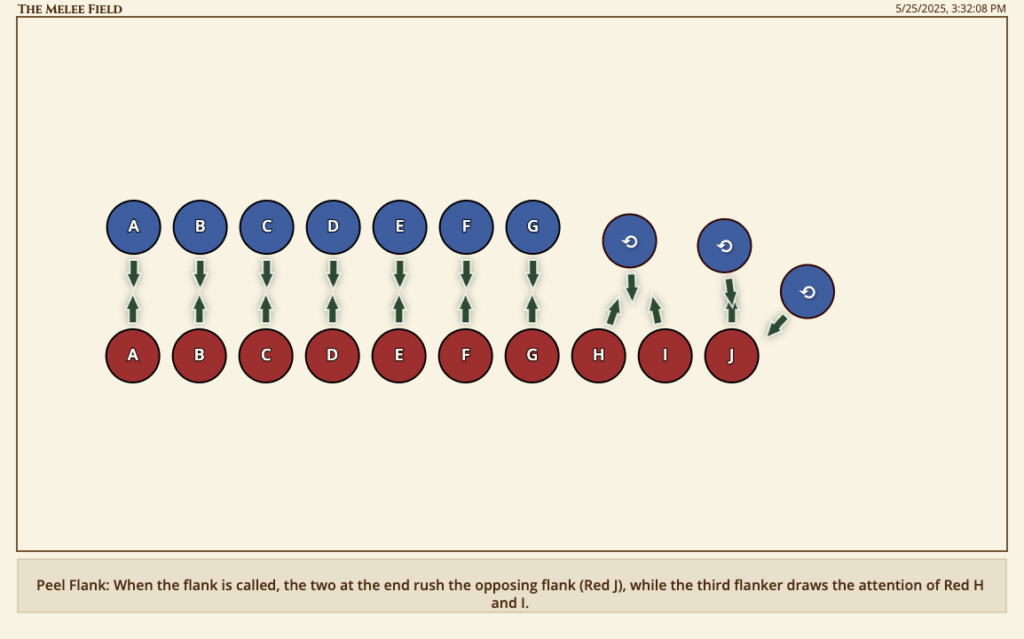
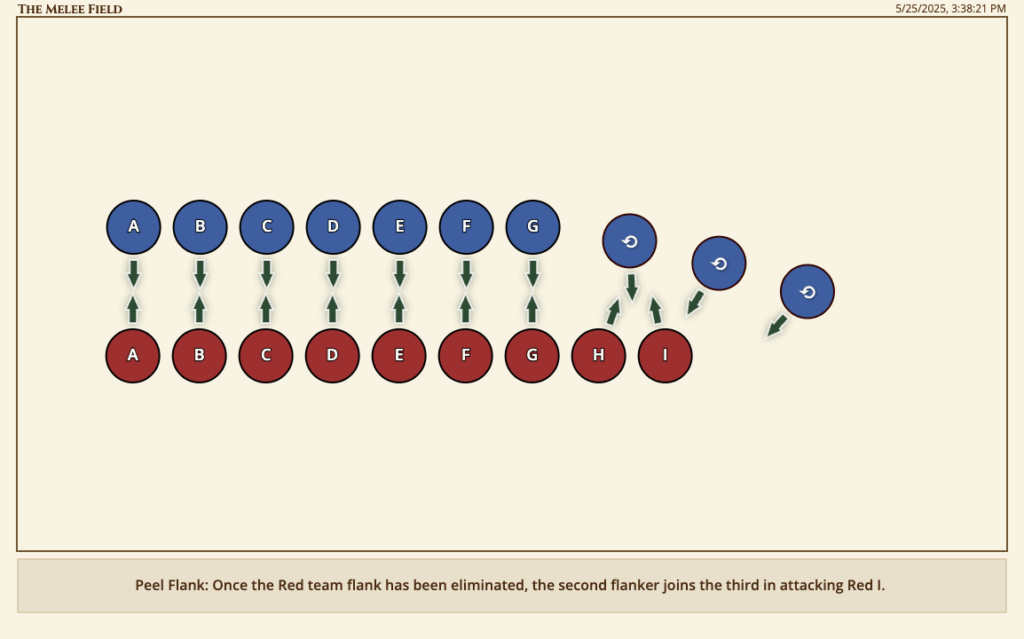
Bonus: A Cut
Concept:
When an enemy is eliminated, a gap is formed, technically creating two internal flanks. Two fighters can cut in either left or right, while a third fighter steps in to prevent the opposite side from getting involved.
Execution Summary:
- Three fighters are watching for a gap to form.
- Choosing either left or right, two fighters quickly press against the internal flank, while a third fighter steps in to prevent the opposite side from getting involved.
- The cut continues to flank the now separated enemy line.

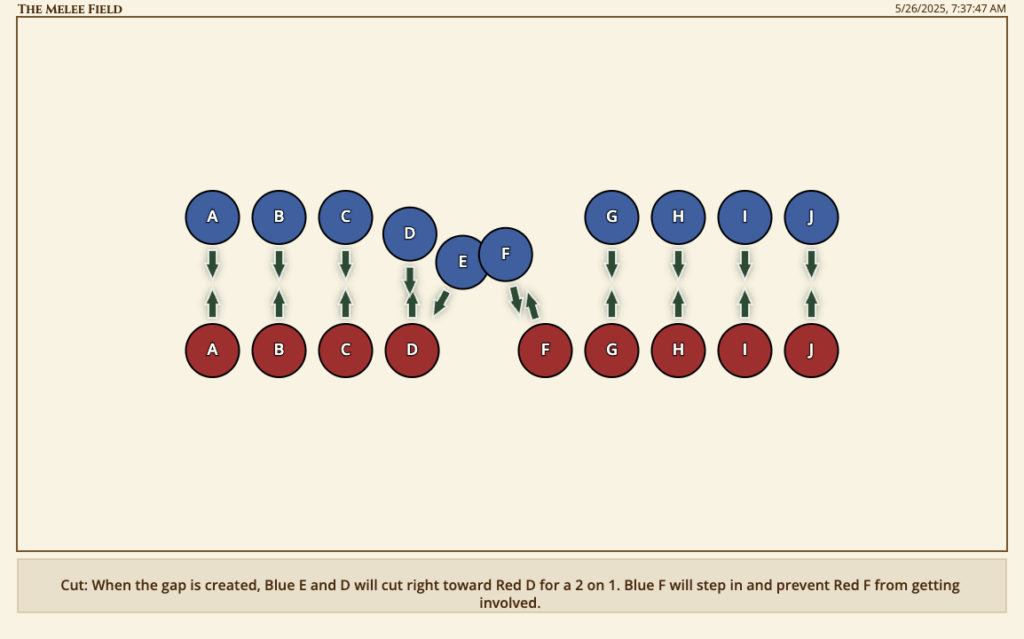
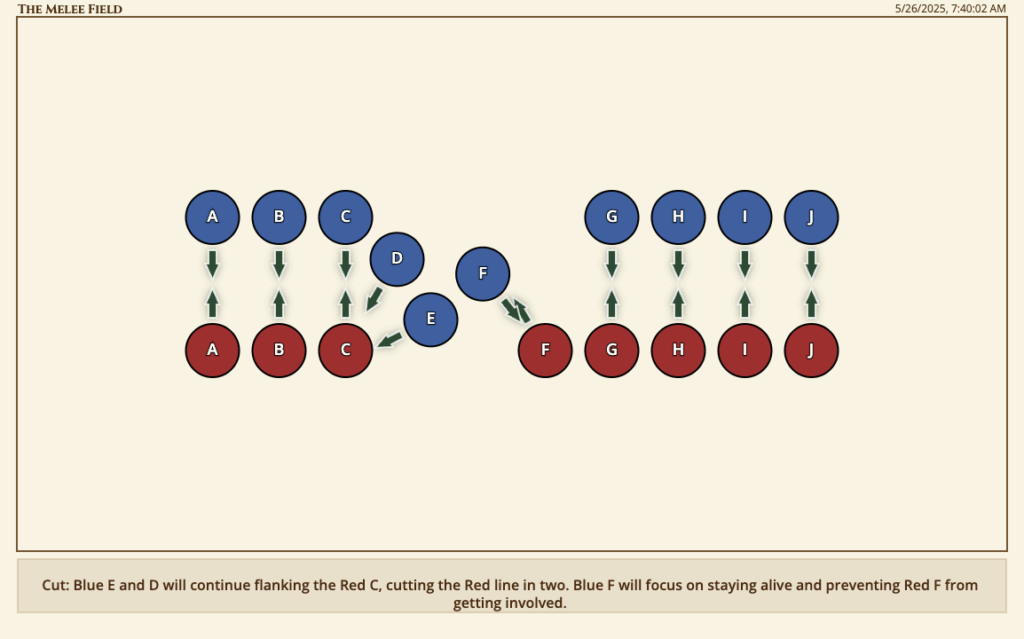
A Key Piece: The Press
A key aspect that is applicable to all of these flanking maneuvers is the Press. A flanking maneuver is an entire team maneuver, not just for the fighters on the end. No matter what flank is called, if you are not directly involved with flanking the line, you should be pressing up against the enemy line. This prevents them from having the time and space to directly respond to the flanking maneuver.
How We’ll Train It
After lessons this week, we’ll head out to the field and do a quick demonstration of one type of flanking maneuver, before lining up and trying it out. We’ll run through a line fight 2 times (each team will get chance to be the attacking team) and then jump back to demo the next concept. Our goal is to spend more time fighting than talking, so each line fight will have the following rules:
- There will be an attacking line and a defending line
- The attackers will perform the designated flanking maneuver. The defending team will put on a basic defense. They will not be trying to break the scenario because we’re training.
- Everyone will have 3 lives (1 starting life, 2 Rezs). This gives the attacking team multiple chances to run the flanking maneuver in a single fight.
- Bring your best or what you’ve been trained on (No FPS)
- You’ll rez by returning to the Rez point and count to three out loud.
- DFB is allowed, but will not be the focus.
- Note: These line fights will not continue to the last fighter. If one team is mostly eliminated, we will call the hold. Remember, we’re losing light so get in the fight!
Final Thoughts
No single tactic wins a melee, but a good flank, executed with speed and support, can turn the tide of a fight. It really is bread-and-butter stuff within a melee, so it’s key that everyone knows what to do when the command is called.

